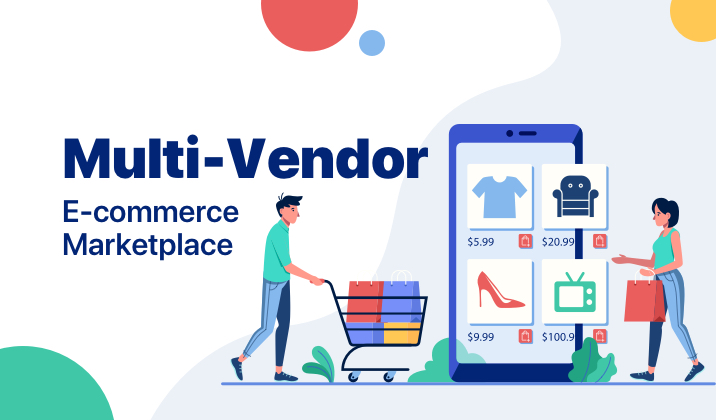Web Development
Guide to Build a Multi-Vendor Marketplace App
December 20, 2021 — By Brain Technosys
According to Digital Commerce 360, the world’s top marketplaces will sell $3.67 trillion in 2022, including Tmall, Amazon, and Taobao. In 2022, analysts expect that 62% of web sales will be made on marketplace websites like Amazon and eBay.
The COVID-19 pandemic has accelerated the adoption of multivendor e-commerce platforms. Most retailers, distributors, and manufacturers began using online marketplaces after automating their business operations. This article examines how to create Multi Vendor Marketplaces similar to Amazon, as well as the expenditures involved.
Types of Multi Vendor Marketplaces
A multivendor e-commerce platform allows consumers to access various services and products. The platform is incredibly popular since it makes users’ lives easier. Its type is
Business-to-Business Marketplace
A B2B marketplace is a platform that allows suppliers to offer their products to other companies directly. Walmart is one example of a forum like this.
Business-to-consumer marketplaceVendors offer their items to clients in a business-to-customer situation. Amazon is one example of such a platform.
Consumer-to-consumer marketplaceCustomers can sell their items to other customers on a customer-to-customer platform. OLX is an example of such a platform.
Benefits of a Multi Vendor Workplace
1. Variety of products
2. Customer Engagement
3. Easy Promotion
4. Seamless Inventory Management
5. Brand Reputation
How to build a Multi-Vendor Marketplace App?
1. Business Model
The first thing that makes you aware of the development cycle is the business model. It is the most important factor. Many platforms, such as Walmart, Amazon, and others, continue to prosper, and the reason for this is the business strategy. When it comes to the platform, there are several options.
The user is aware of the platform’s speciality, which allows them to purchase things that meet their needs. Different business models exist. Here are some examples:
- Buyers and Sellers
- Brands
Why Multi-Vendor App Development?
As mentioned previously, there are several advantages to having a multi vendor platform. Here are some reasons why a multivendor e-commerce software should be developed:
- Customers are drawn to the site by the vast number of items accessible, which keeps them informed about new products.
- It reduces the amount of money you’ll spend on inventory management.
- Allows you to get items and services quickly and conveniently.
- Allows you to target clients throughout the world more efficiently.
Multivendor Apps’ Features
There are several important things to consider when it comes to e-commerce app development.
Let’s take a look at each:
- Onboarding
- Dashboard for seller
- Transactions
- Rating & Reviews
- Inventory Management
- Navigation
Revenue Model
You may earn and create cash from your business through several monetization tactics. There are several income models available, including:
It allows your users to purchase monthly or annual membership subscriptions.
The commission is set for each vendor and is a particular proportion for the business owners.
The seller can effectively market your product to attract consumers’ attention and enhance sales.
Technology Stack
Choosing the right mobile app development business is critical. When it comes to a multi vendor marketplace, knowing which platform is best suited for development and business success is vital.
The technology stack has a significant influence on the user experience, as well as on user retention. Let’s take a look at the tech stack for developing logistics software.
- Front End Development – HTML, JavaScript & React.JS
- Backend Development – Ruby-on-rails








